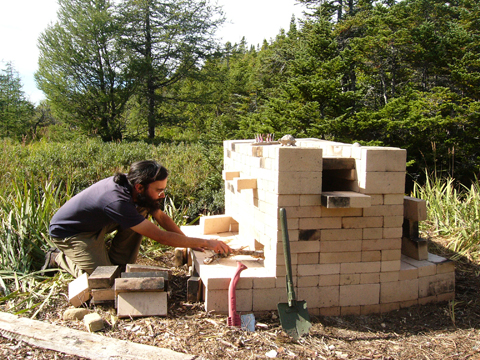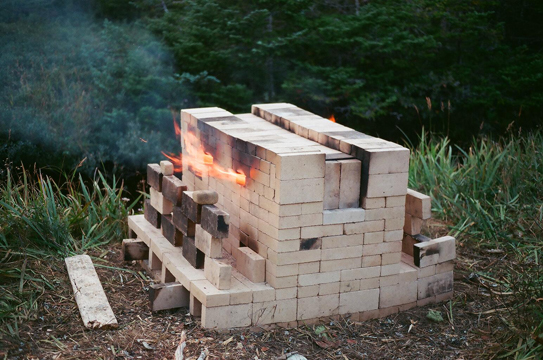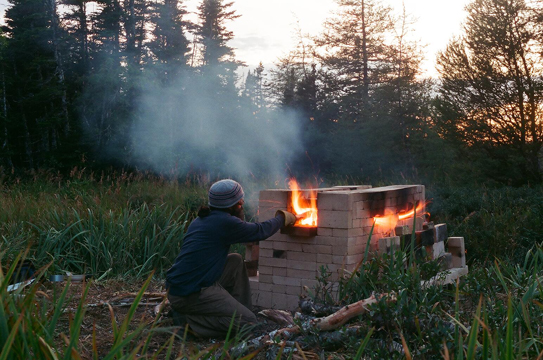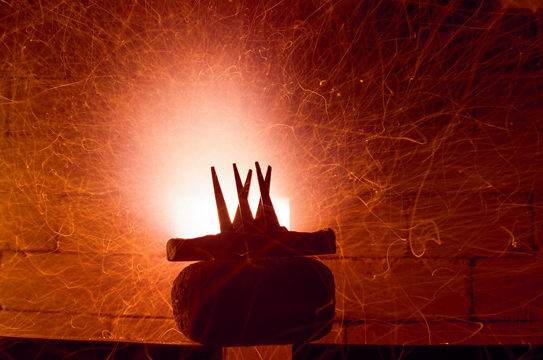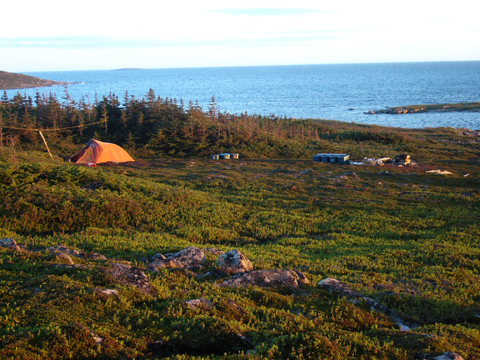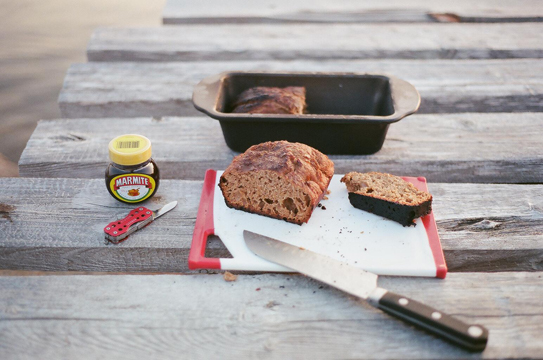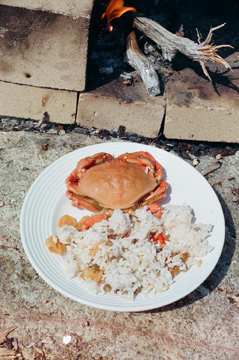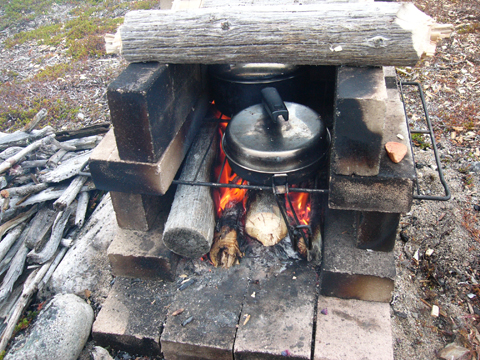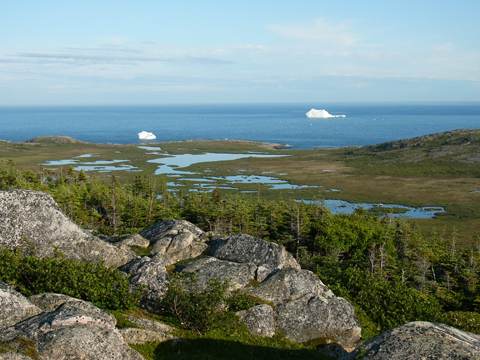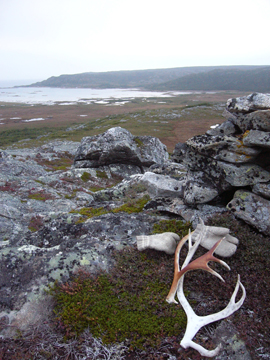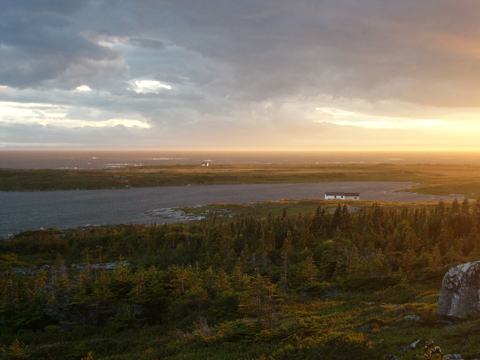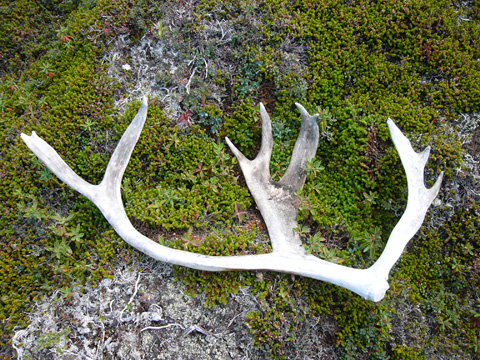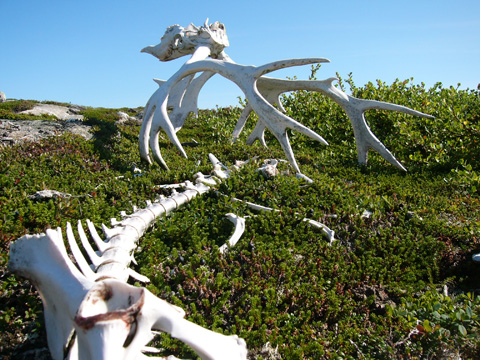Home
Gallery
Biography
CV
Contact
The Grey Islands

2009
Site-specific installation
Visit the blog for this project here: http://thegreyislands.blogspot.com
The Grey Islands was a three-month interdisciplinary ceramic art project that took place on the Grey Islands, an uninhabited island group off the north coast of Newfoundland. During the summer of 2009 I lived alone on the islands where I constructed an inside-out ceramic kiln with which I "fired" the islands. The project was documented with video, photography, and my own oral narrative.
The project is quite simple in concept: I brought 500 firebricks with me to the islands, along with everything I needed to document the piece and to survive there alone for the summer. I made the kiln according to a traditional wood kiln design, only I inverted the plans so that in principle the kiln is inside-out. It was fired with wood according to a typical firing schedule for that type of kiln (approximately 24 hours). I carried the bricks three kilometres up cliffs and across bogs to the kiln site I selected - an idyllic location next to a river in a secluded fen.
My work is loosely based on The Grey Islands, a narrative poetry book by Canada's recent Poet Laureate, John Steffler. In Steffler's book the protagonist travels to the Grey Islands for an extended period of time to realize his romantic notion of survival. I relate to this character for two main reasons. First, I see a qualitative correlation between his idea and the romantic yet cliche idea of the rural potter who survives on the margins of contemporary society and economics. As a ceramicist I have been exposed to this "country potter" concept since the very beginning of my education - it is engrained within the lore of the ceramic genre, and therefore I feel it needs to be investigated. In a sense, my project presents a somewhat tongue-in-cheek analogy: How could the "country pottery" cliche translate onto a postmodern conceptual ceramicist?
Secondly, there are numerous connections between Steffler's character's activities and mine from a previous art piece, the Bicycle Rehabilitation Project. For this piece I bicycled across North America, lived out of my tent for nearly six months, and visited art galleries to perform free bicycle tune-ups for gallery patrons. I have become interested in projects that explore new territory in the integration of art and life, and that also revolve around themes of day-to-day survival.
The Grey Islands has some obvious historical precedents: it is influenced by Marcel Duchamp's readymades (its relationship with Fountain is of particular interest since contemporary critics like Garth Clark have tried awkwardly to force ceramic connotations onto DuChamp's porcelain urinal), and Piero Manzoni's Base for the World (a pedestal placed upside-down on the ground which contextualizes the entire world as Manzoni's art piece). In the same manner, I want to demonstrate that an entire landmass may be considered a ceramic object. This work is not, however, entirely an exercise in semantics - I also address a much more important issue, that of interdisciplinarity within the craft genres. Works being produced by contemporary ceramicists are increasingly difficult to classify or understand because they often involve non-traditional materials, modes of dissemination, venues and audiences. As traditional definitions break down it is not uncommon to see artists dealing with ceramic content, issues and themes while (temporarily) abandoning the ceramic material in favour of something more expressively appropriate. I have been working in this mode for some time, therefore my recent projects have included such diverse practices as performance, webart, intervention and photography, which, problematic though it may be, I vehemently consider to be ceramic art. The ultimate purpose of The Grey Islands is to say that even within the material-oriented craft genres traditional hierarchies of medium and concept need to be reevaluated.
In the end The Grey Islands became as much an anthropological study as anything else, as I became deeply interested in the area, it's people, and their history. This is a topic I have explored with my subsequent projects Settlers of Grey Islands and Rangifer Sapiens.
